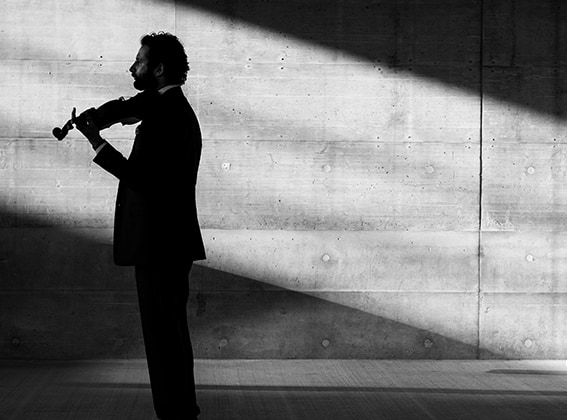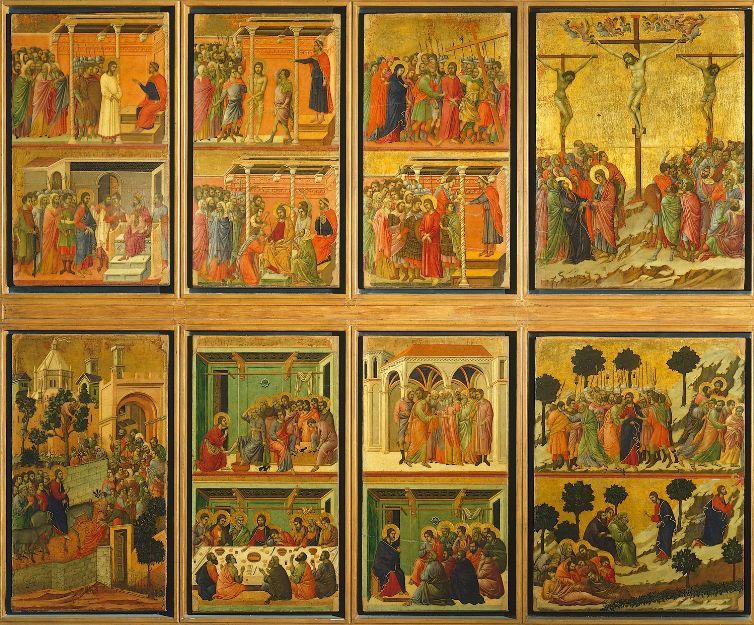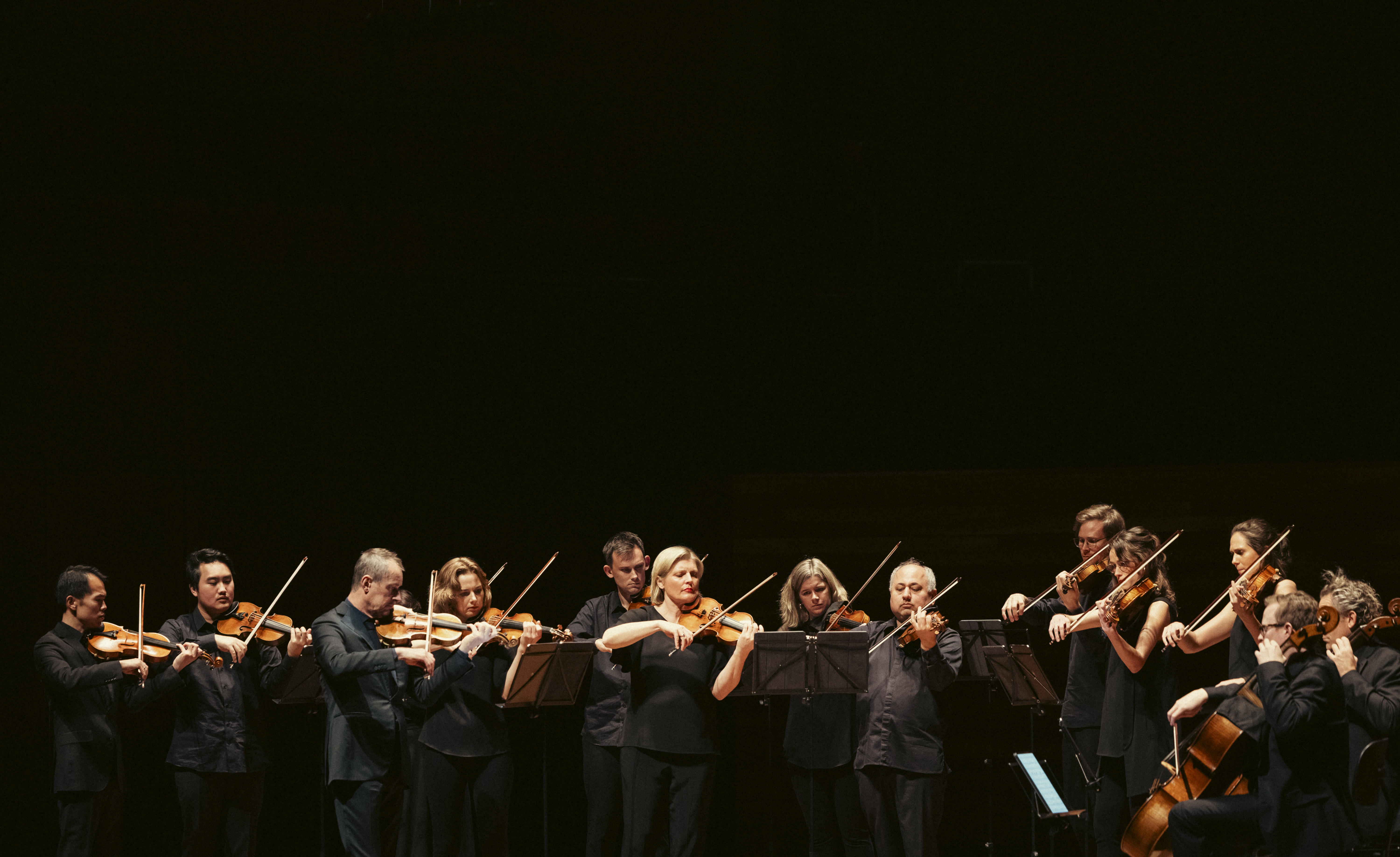
“When an amazing violinist stops the car and goes, ‘I have to know who this guy is’,” says ACO cellist Julian Thompson, “you know there’s something going on.”
The violinist was Richard Tognetti and “this guy” was Ilya Gringolts performing Paganini on the radio. A few years later, in 2018, Gringolts collaborated with the ACO on a thrilling Australian tour featuring his iconic incarnation of Paganini, as well as works by Bartók, Vivaldi and CPE Bach. “He’d go out there and play like a complete god,” remembers Thompson, “and then come out for a beer afterwards.”
Now the soloist and the ACO are close friends and Gringolts returns for a second concert tour with a characteristically wide-ranging program. “We’re going to get a lot out of Ilya while he’s here,” says Thompson cheerfully. “We get a few days of rehearsal and then play 10 concerts. And a program evolves over 10 concerts. You get deeper into the vernacular of whatever composer it is, and obviously you get to know the director much better over the time. So it gives you a meatier relationship than with fly-in-fly-out musos. Someone like Ilya coming in, who has this really rich and broad perspective, from the Baroque to music written yesterday, he brings some real fibre to this.”
With a muso like Ilya Gringolts there is a lot to encounter. The Russian-born violinist is celebrated for his scintillating virtuosic talent, which saw him, aged 16, become the youngest-ever winner of the International Violin Competition Premio Paganini and undertake some – occasionally fraught – adolescent study under Itzhak Perlman at New York’s Juilliard School before a soaring career as a soloist. He has played with leading orchestras across the globe, had ecstatic reviews of his many recordings and founded the Gringolts Quartet with his wife, the Armenian violinist Anahit Kurtikyan, who has also worked with the ACO. He is known for his intellectual rigour and restless questing, experimenting with period instruments, iconoclastic attitudes to vibrato and reconnoitring the many kingdoms of music – from the lush valleys of Baroque to the misty altitudes of contemporary classical.
Gringolts is an innate experimenter, as Thompson points out. “He enters these exploratory realms of playing with gut strings and exploring baroque techniques and styles; then he does that flipside of really contemporary stuff where the ink’s still drying. He has this really wide, enquiring mind about how he approaches things and what he’s looking for, but also when he talks he references the old grand masters of the violin, how they approached the instrument and sound. He’s such an interesting mix of all those things.”
“I see my work as a bit of an archaeologist,” Gringolts explains. “I like things to be historically correct – including music from the recent past. So I’ll listen to the recordings of the time or I’ll read books about it. The process itself is fascinating to me and the ACO is known for that approach as well.”

Now – after much brainstorming and preparation between the ACO office in Sydney and Gringolts in his hometown of Zürich – the explorations continue in a program that vigorously mixes the canonical and the contemporary. Both soloist and orchestra are devoted to such combinations and each program is a work of art in itself.
Gringolts reflects on the puzzle of its devising: “The usual problem with choosing a program to do, with a string orchestra especially, is that there’s so much material out there, and at the same time you want to have a thread in your program and kind of make everyone happy, including yourselves and make it diverse – not necessarily in a fashionable sense of the word but in a true sense, where you have different characters and different years and different types of music, but at the same time, it doesn’t look like patchwork.”
The Russian-born violinist is celebrated for his scintillating virtuosic talent, which saw him, aged 16, become the youngestever winner of the International Violin Competition Premio Paganini and undertake some – occasionally fraught – adolescent study under Itzhak Perlman at New York’s Juilliard School before a soaring career as a soloist.
He is excited by the result. “You want to check all the boxes, if possible. Then what binds them together? I think maybe human emotion, that’s universal,” he says. “Of course, you can always find a kind of superficial thread that binds things and that can work, or maybe not work so well. But I think we’re looking for something deeper than that. Something that holds this music together. The emotion that’s in it. Here, I think you have sort of a bit of everything for everyone. You have a great forgotten piece. You have the child prodigy piece. And then a really intense piece, very serious.”
The tone is set by the gorgeous Bruch violin concerto. It’s a piece, Gringolts reminds us, that’s not even in the repertoire of string orchestra. “This piece is one of the most performed works for violin and orchestra of all time probably,” he says. “It’s irresistible in its own way – the kind of hit that you know immediately why it is where it is. A real crowd pleaser classic.” The ACO decided to make one of their celebrated adaptations and their in-house arranger Bernard Rofe has produced a version for strings and timpani. “I’m looking forward to it. It will be very interesting to see how it how it goes without the winds and without the big orchestra.”
“For Ilya to come out and play the Bruch is really exciting, to see what he brings to that kind of big Romantic repertoire,” says Thompson. “While we do play up to the scale of big symphonic repertoire, with expanded forces, it’s always interesting for us in the chamber orchestra to downsize repertoire originally written for a symphony. That’s quite a creative process unto itself.”
The Mendelssohn is an agreeable new piece for Gringolts: “I know many of the symphonies, which are really marvels of a child talent.” Mendelssohn composed his Symphoniesatz in 1823–4 at the age of 14 as the last work in an early burst of creativity that produced 12 other string symphonies. “These are masterworks. And this will be the first time I get to play it. I think it’s actually one of his most powerful little symphonies – well, it’s really just one movement. But it’s so packed. So full of energy and wonderfully crafted. His trademark is all over it.”
Another youthful artist presented is Australian Harry Sdraulig with Slanted, a set of 18 variations massed in two parts that was commissioned by the ACO and written in late 2022. “This world premiere is very exciting,” says Gringolts. “I know Harry’s music and it’s wonderfully energetic and full of ideas, so I’m looking forward to that. And for me personally it is always important to include new pieces in any program. This is what we what we all strive to do.”
New music these days, he says, often gets sandwiched around the canon favourites. “I think the best solution would be to actually have more new music on the podium than old music, so to speak, but this is not always realistic. And we also have to deal with the fact that we simply have so much baggage now, all this great stuff that’s out there to be performed. So many things have to be sacrificed, unfortunately; new music gets sacrificed first. But you know, I’m doing what I can to change it.”
Gringolts’ singular devotion to supporting new work has seen him establish, with Ilan Volkov, the I&I Foundation to commission it. “This is what we used to do a hundred years ago,” he says. “Somehow it got lost along the way, supporting the living composers and music that’s hot off the press. And with new works we have the luxury of the composer being there. I really look forward to working with Harry, getting his input and feedback. This is what’s really fascinating for me generally playing music: having this immediate connection. This direct link that you spend hours searching for with older music. Here it’s there for you to use.”
“On the surface it’s about Jesus Christ and Golgotha and the resurrection story, but it’s much more than that. It’s profoundly human. So personal it sort of makes you feel uncomfortable at times, but it’s amazing music ... I have a suspicion that that’s why it’s not performed enough. It’s so intense.”

The piece on the program that perhaps most enthrals him is Frank Martin’s Polyptyque, a religious devotional based on sacred paintings in Siena. “It is a piece that almost makes you uncomfortable because it’s so personal. It speaks about life and love and death, guilt, redemption, all the important big topics, stuffed into a 25-minute piece,” he says. “On the surface it’s about Jesus Christ and Golgotha and the resurrection story, but it’s much more than that. It’s profoundly human. So personal it sort of makes you feel uncomfortable at times, but it’s amazing music ... I have a suspicion that that’s why it’s not performed enough. It’s so intense.”
This will be the ACO’s first performance of the 1973 masterpiece by the Swiss composer, which was commissioned and debuted by Yehudi Menuhin. Gringolts has played it two or three times in his career. “The ACO is the right outfit to really get into it, to dig into the true emotions,” he says. Thompson is glad of the collaboration as they approach this intricate and sublime work: “It’s great to have someone who knows repertoire like that and has played it before, to help the orchestra find its voice in it.”
Having surmounted the Martin, the musicians conclude with the Concerto for String Orchestra by another 20th-century European composer, Grażyna Bacewicz, also a solo violinist and pianist and again a new experience for Gringolts. “Bacewicz is one of these best-kept secrets who I think is slowly becoming no longer a secret,” he enthuses. “And that is good news. Because there’s so much, so much great music that she wrote. I mean, this is someone who wrote seven violin concerti; you don’t see this kind of thing maybe since Vivaldi.”
The Polish neo-classicist and Sonorist wrote an abundance of nuanced works, many complex and rewarding to new ears, and the 1948 Concerto – one of the outstanding works of Polish classical music – is remarkable for its facility with both traditional and modern modes, again including the Baroque. “You’re going to hear Hollywood, you can hear Stravinsky and the French influence. But she makes it her own. And this is for me the first time of playing her pieces. That’s something I missed in my education, that I feel really bad about, but I’m thankful also to the ACO for giving me the opportunity to do this.”
Gringolts’ technical skills are beyond doubt and his expressive coaxing of beauty is apparent in every recording. Yet virtuosic playing is beyond this: it is something that makes a colleague stop a car in wonder.
Gringolts’ technical skills are beyond doubt and his expressive coaxing of beauty is apparent in every recording. Yet virtuosic playing is beyond this: it is something that makes a colleague stop a car in wonder. It must feel extraordinary to be that person, doing those things. “There’s some distance involved,” he reveals. “I mean, at least for me, when you’re on stage you have to be kind of above it, you can’t be in it. The audience might think that you’re in it, but you’re not really there.” It can be seen in a filmed performance with the Moscow Symphony Orchestra when Gringolts was 11: his little young face motionless with absorption above relentlessly flying fingers. “‘Automatic’, you might say, but ‘automatic’ sounds bad, as if you have no control over it; of course you do. The distance is important.”
But if that sounds cold, his three decades of devotion, his hardwon confidence and perpetual exploration suggest there is also delight. “Some languages actually have two words for play,” he observes. “You know, one is actual play as in ‘playing a game’; then there’s playing the instrument. I think as soon as you can do both on an instrument you’re basically okay. So just making the sound obviously is not enough. Just playing with the music also, not enough. But once you have both something is probably bound to happen. Of course, it’s easier said than done.” He shrugs. “Ten thousand hours later, you might still not be at that point, but you’re on your way.”
And when he works with like-minded spirits, the spontaneity of adventure meets the precision of accomplishment. With the ACO friendship, Gringolts appreciates another singular musical entity. “Violinists don’t actually really get along very often,” he says, laughing. “But, in this case, I think you have to admire the sheer ingenuity of the musicmaking. That amazing kind of creativity that Richard has. Actually, everyone in this ensemble has always fascinated me. The way they interact. The way they sculpt the music on stage: there’s no pattern. It really feels like every bar, every little phrase is thought through and at the same time another kind of narrative feels improvised as well. So it’s both; I mean, some of it at the same time is spontaneous but you do see how much work has been put into it. So this kind of duality is what makes it so special. It’s a one of a kind experience and I’m very lucky to be part of it.”
Musicians, Thompson observes, enjoy a long arc – “through all those decades and decades of making music, a sort of transformation and development”. “I imagine that someone like Ilya, who seems even to us professional musicians to have not a technical care in the world, is still working on technique, so that his ability as a musical storyteller gets better and more direct. The idea is that you get closer and closer to a state of having musical ideas and being so in tune with your instrument that you can realise those ideas – straight away.” A program that involves new works, new encounters with old works, and a renewed relationship with fellow musicians is part of this evolution.
“He can obviously play anything on the instrument,” marvels Thompson. “I mean, he’s a freak, and I say that in the nicest possible way. In that last tour we did, he would play different encores every night after the Paganini and some of them he played with such ease they almost sounded like different pieces from the versions you’d heard before. No technical impediments whatsoever. He’s legitimately a monster. Well,” the cellist says, deadpan, “it’s only 33cm of violin string: how hard can it be?”
Ilya Gringolts plays Bruch tours to Newcastle, Melbourne, Sydney, Brisbane and Canberra, 2-15 February. Click here to buy your tickets now.
You can also catch Ilya at his Solo Recital on 14 February at ACO Pier 2/3, find out more here.
